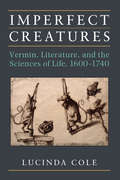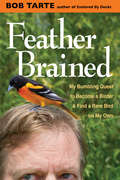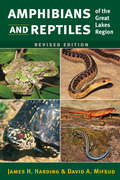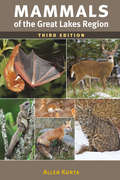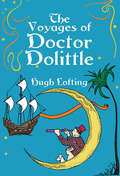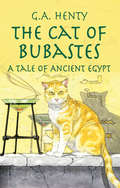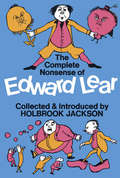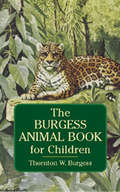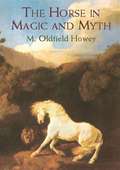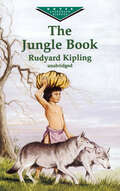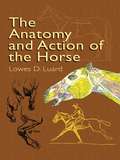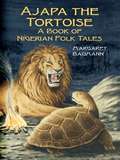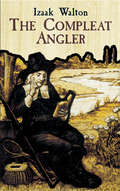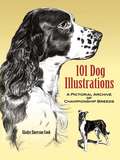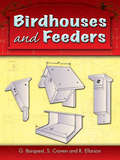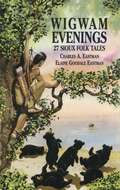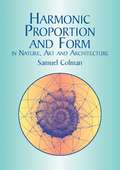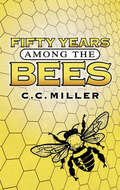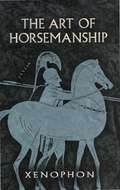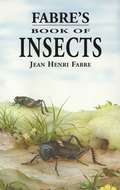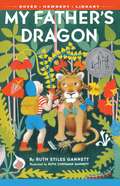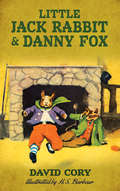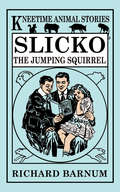- Table View
- List View
Imperfect Creatures: Vermin, Literature, and the Sciences of Life, 1600-1740
by Lucinda ColeLucinda Cole’s Imperfect Creatures offers the first full-length study of the shifting, unstable, but foundational status of “vermin” as creatures and category in the early modern literary, scientific, and political imagination. In the space between theology and an emergent empiricism, Cole’s argument engages a wide historical swath of canonical early modern literary texts—William Shakespeare’s Macbeth, Christopher Marlowe’s The Jew of Malta, Abraham Cowley’s The Plagues of Egypt, Thomas Shadwell’s The Virtuoso, the Earl of Rochester’s “A Ramble in St. James’s Park,” and Daniel Defoe’s Robinson Crusoe and Journal of the Plague Year—alongside other nonliterary primary sources and under-examined archival materials from the period, including treatises on animal trials, grain shortages, rabies, and comparative neuroanatomy. As Cole illustrates, human health and demographic problems—notably those of feeding populations periodically stricken by hunger, disease, and famine—were tied to larger questions about food supplies, property laws, national identity, and the theological imperatives that underwrote humankind’s claim to dominion over the animal kingdom. In this context, Cole’s study indicates, so-called “vermin” occupied liminal spaces between subject and object, nature and animal, animal and the devil, the devil and disease—even reason and madness. This verminous discourse formed a foundational category used to carve out humankind’s relationship to an unpredictable, irrational natural world, but it evolved into a form for thinking about not merely animals but anything that threatened the health of the body politic—humans, animals, and even thoughts.
Feather Brained: My Bumbling Quest to Become a Birder and Find a Rare Bird on My Own
by Bob TarteFor much of his life, the closest Bob Tarte got to a nature walk was the stroll from parking lot to picnic table on family outings. But then a chance sighting of a dazzling rose-breasted grosbeak in wife-to-be Linda’s backyard prompts a fascination with birds, which he had never cared about before in the least. Soon he is obsessed with spotting more and more of them—the rarer the better—and embarks on a bumpy journey to improve his bumbling birding skills. Along the way, Tarte offers readers a droll look at the pleasures and pitfalls he encounters, introduces a colorful cast of fellow birders from across the country, and travels to some of the premier birding sites in the Midwest, including Point Pelee, Magee Marsh, Tawas Point State Park, and even Muskegon Wastewater System. This funny, heartfelt memoir will appeal to birders of all skill levels as well as to anyone who knows and loves a birder.
Amphibians and Reptiles of the Great Lakes Region, Revised Ed. (Great Lakes Environment)
by James H. Harding David A MifsudThe revised edition of this well-loved guide is the essential reference for the identification of amphibians and reptiles in the Great Lakes region. Fully updated treatments of over 70 species feature detailed information on the distribution, habitat, behavior, and life history of these fascinating animals. This edition includes all new distribution maps as well as 90 additional color photographs showing close-ups of distinguishing features, common color phases, and different metamorphic stages. A thorough introduction provides a wealth of information on the evolution, natural history, classification, and conservation of these animals and examines changing Great Lakes ecosystems and their impact on herpetological diversity. Amphibians and Reptiles of the Great Lakes Region is a must-have resource for teachers, students, naturalists, professional biologists, and anyone else with an interest in this region’s ecology.
Mammals of the Great Lakes Region, 3rd Ed. (Great Lakes Environment)
by Allen KurtaNow in an extensively revised 3rd edition, Mammals of the Great Lakes Region has been an essential reference for countless amateur and professional naturalists since 1957. Easily tucked into a backpack and carried into the field, this heavily illustrated guidebook offers detailed information on 83 species, including each mammal’s appearance, behavior, and natural history, along with an explanation of its scientific name. Species accounts are accompanied by new color photographs plus fully updated distribution maps showing the geographic range in the Great Lakes region and in North America. A thorough introduction outlines the environmental factors that affect the distribution and abundance of mammals in Great Lakes ecosystems and discusses the impacts of current human activities, including introduction of diseases and climate change. There is also a section on preparing captured specimens for research or teaching, as well as user-friendly keys and quick reference tables to physical measurements and life history data. Brand new in this edition, the book also features detailed illustrations of the tracks of commonly found mammals to assist with year-round identification. Providing the most up-to-date information on mammals in the Great Lakes basin, this book belongs on the shelves of teachers, students, naturalists, and professional biologists throughout the region.
The Voyages of Doctor Dolittle (Dover Children's Classics)
by Hugh LoftingTogether with Jip the Dog, Polynesia the Parrot, and 9-year-old Tommy Stubbins, the good doctor sets off in search of a missing colleague. This Newbery Medal–winning adventure recounts the hunt for Long Arrow, the world's greatest naturalist, in treks that range from the Mediterranean and South America to the bottom of the sea. Thanks to the doctor's gift for conversing with animals, the travelers find a solution to every challenge, including a curious encounter with a sea monster and a shipwreck on a mysterious island. "Any child who is not given the opportunity to [meet Doctor Dolittle] and all of his animal friends will miss out on something important." — Jane Goodall, wildlife biologist and author
The Cat of Bubastes: A Tale Of Ancient Egypt (Dover Children's Classics)
by G. A. HentyChebron, the young son of an Egyptian high priest, and Amuba, a young slave in the boy's household, are close friends; but their lives are greatly altered when Chebron accidentally kills a cat, an animal held sacred by the ancient Egyptians. Forced to flee for their safety, the boys and their companions begin a long and dangerous journey. A thrilling adventure story, this is also a tale packed with historical facts. Among other fascinating details, young readers learn about the Egyptian religion and geography, how the Nile was used for irrigation, and how the Egyptians made war and were prepared for burial. A captivating book that accurately describes life in a once magnificent civilization, this volume will especially appeal to youngsters fascinated by the life and customs of ancient Egypt.
The Complete Nonsense of Edward Lear
by Edward LearHere is every line of every nonsense book written by Edward Lear. In a single volume you get "A Book of Nonsense," "Nonsense Songs," "More Nonsense Songs," "Laughable Lyrics," and "Nonsense Songs and Stories. No other low-price edition offers this complete collection.You will meet such old favorites as "The Dong With a Luminous Nose," "The Jumblies," "The Owl and the Pussycat," "The Nutcrackers and the Sugar Tongs," and "The History of the Seven Young Owls." Two hundred and fourteen limericks are in here as well, each illustrated with the drawing Lear composed specially for it. In addition, you'll find three different sets of Nonsense Botany, five Nonsense Alphabets, and dozens of other selections in both prose and verse.All 546 of Lear's original illustrations are in this volume. With masterful simplicity and apparent naiveté they tell of the dreamlike never-never land of childhood. Many Lear enthusiasts maintain that in these drawings the Laureate of Nonsense gave rise to an entire new style. Their influence has certainly been widespread, with echoes of Lear to be seen in the work of Thurber, Steinberg, Phil May, Bateman, and other artists and illustrators.It has been a hundred years since Edward Lear, the advocate of illogic, first became known to a wide public. Children who begged to have his verses read to them have grown up to read Lear to their own children — and to discover that his whimsy, imagination, and originality have their attraction for the adult mind as well.
The Burgess Animal Book for Children
by Thornton W. BurgessWhen Jenny Wren learns that Peter Rabbit would like to know more about the four-footed friends who share the Green Meadows and Green Forest with him, she encourages him to speak with Old Mother Nature who is only too happy to help. During their "classroom" chats, she not only teaches Peter about Arctic Hare and Antelope Jack but also tells him about such creatures as Flying Squirrel, Mountain Beaver, Pocket Gopher, Grasshopper Mouse, Silvery Bat, Mule Deer, and Grizzly Bear.Told with all the warmth and whimsy of Burgess's stories, this engaging book acquaints youngsters with many forms of wildlife and the animals' relationships with one another. The charming collection of entertaining tales is sure to transport today's young readers to the same captivating world of nature that delighted generations of children before them.
The Horse in Magic and Myth
by M. Oldfield HoweyFrom Pegasus and the Trojan horse to the four horses of the Apocalypse, the familiar figure of the horse possesses an age-old mystique. Indeed, many cultures around the world attribute otherworldly qualities to the horse. This volume provides a rich compilation of legend and lore celebrating the sacred and magical symbolism traditionally associated with horses.Derived from classical mythology, the Bible, world folklore, literature, and other sources, these fantastic tales recount the exploits of angelic steeds and demonic horses as well as centaurs, hippogryphs, and unicorns. Supernatural warhorses and headless phantom horses gallop through these stories, in addition to fairy horses, sea horses, hobbyhorses, bridal horses, corn-horses, moon-horses, wind-horses, and many other fabulous equine exemplars. Readers will also find legends of the gods and patron saints of horses, the horse and metempsychosis, the horse in creation myths, and much more.A bibliography appears at the end of each chapter, providing scholars and folklorists with an excellent range of resources. The informal and colorful narrative, enhanced by several fanciful illustrations, makes this unique book a treat for horse lovers and readers of all interests.
The Jungle Book: Featuring The Complete Works The Jungle Book And The Second Junge Book (Dover Children's Evergreen Classics)
by Rudyard KiplingAmong the most popular children's books ever written, The Jungle Book (1894) comprises a series of stories about Mowgli, a boy raised in the jungle by a family of wolves after a tiger has attacked and driven off his parents. Threatened throughout much of his young life by the dreaded tiger Shere Khan, Mowgli is protected by his adoptive family and learns the lore of the jungle from Baloo, a sleepy brown bear, and Bagheera, the black panther.Subtle lessons in justice, loyalty, and tribal law pervade these imaginative tales, recounted by a master storyteller with a special talent for entertaining audiences of all ages. Included are such tales as "Rikki-tikki-tavi," a story about a brave mongoose and his battle with the deadly cobra Nag; Mowgli's abduction by the monkey people; and "Toomai of the Elephants," in which a young boy witnesses a secret ritual and is honored by his tribesmen.This inexpensive, unabridged edition of The Jungle Book promises to enchant a new generation of young readers, as it recalls to their elders the pleasure of reading or hearing these stories for the first time. This classic served as the basis for many film adaptations, including the 2016 live-animation Disney release directed by John Favreau.
A Flight of Butterflies
by Kanzaka SekkaExquisite full-color plates depict 216 winged beauties, soaring and drifting across the pages in apparently seamless flight. Also includes a bonus CD-ROM that features all of the royalty-free butterfly graphics, both in full "flights" and separated into individual units. Ideal for lovers of fine art and for use by graphic artists, designers, and craftworkers.
The Anatomy and Action of the Horse
by Lowes D. LuardThis easy-to-read text explains the horse as a machine designed for movement. Using different colors in his drawings, the author not only describes with clarity the horse's skeleton and the functions of various muscles, but also creates images that have the power to suggest movement and stress. More than 75 illustrations include accurate diagrams and color illustrations fo the horse's anatomy, as well as meticulously rendered sketches of the entire animal.Of value to students and teachers of art, this book will also appeal to horse lovers who want a deeper understanding -- without having to examine the anatomical complexities of the subject -- of why this animal is capable of moving with such grace and speed.
Ajapa the Tortoise: A Book of Nigerian Folk Tales
by Margaret BaumannLong before people could turn to books for instruction and amusement, they relied upon storytellers for answers to their questions about life. Africa boasts a particularly rich oral tradition, in which the griot -- village historian -- preserved and passed along cultural beliefs and experiences from one generation to the next. This collection of 30 timeless fables comes from the storytellers of Nigeria, whose memorable narratives tell of promises kept and broken, virtue rewarded, and treachery punished.Ajapa the Tortoise -- a trickster, or animal with human qualities -- makes frequent appearances among the colorful cast of talking animals. In "Tortoise Goes Wooing," he learns a valuable lesson in friendship and sharing. Ajapa's further adventures describe how, among other things, he became a chief, acquired all of the world's wisdom, saved the king, tricked the lion, and came to be bald. Recounted in simple but evocative language, these ancient tales continue to enchant readers and listeners of all ages.
The Compleat Angler: Or, Contemplative Man's Recreation
by Izaak WaltonFirst published in 1653, this literary and nature classic was created by a Londoner with a passion for rustic life. As satisfying a primer on fishing as any angler could wish, it celebrates the art and spirit of fishing with verse, song and folklore, moral reflections, and timeless wisdom. Cast in the form of a dialogue between the veteran angler Piscator and his pupil Viator, it both informs and delights with an ingenious exploration of fishing's subtle intricacies and the pleasures of the natural world.
101 Dog Illustrations: A Pictorial Archive of Championship Breeds
by Gladys Emerson CookA blue-ribbon collection of 116 breeds recognized by the American Kennel Club, these dramatically detailed lithographs include sporting and non-sporting dogs, hounds, working dogs, terriers, and toys. A comprehensive reference for graphic artists and dog lovers, this compilation includes brief captions and concise, information-packed descriptions of each breed.
Making Birdhouses: Easy and Advanced Projects
by Leon H. Baxter Gladstone CaliffThis practical guide for building birdhouses contains plans for more than fifty attractive and useful structures — from a one-room house for bluebirds to a forty-two-room structure for purple martins. In addition to instructions and diagrams for constructing houses for such avian varieties as robins, wrens and chickadees, the easy-to-follow text also provides suggestions for feeding devices, bird house materials, methods of finishing exteriors, and winter care for birds. An authoritative, how-to book that will appeal to beginning and veteran woodcrafters alike, Making Birdhouses also features a supplement with easy projects for novices — among them simple structures for woodpeckers, a box for robins, and an “A-frame” for nuthatches. Plans for houses made from such common objects as gourds, a flower pot, tin cans, and an old lantern are also included.Detailed instructions and diagrams assure successful completion of projects that will satisfy builders as well as their feathered friends.
Birdhouses and Feeders
by S. Craven G. Barquest R. EllarsonYou don't have to be an outdoorsy type to enjoy birdwatching, and you don't necessarily have to go outdoors to watch birds! Set up any of these thirty cozy homes and feeders in a spot that's conveniently viewed from indoors, and let the show begin!This easy-to-use manual features clear illustrations and step-by-step construction guidelines for building permanent residences, winter homes, and snack bars for birds of many different feathers—wrens, bluebirds, owls, robins, titmice, and other species, including squirrels and bats. A list of easily obtainable materials appears with each design, along with helpful suggestions for attracting specific creatures. Most designs involve woodworking techniques; others offer simple methods for recycling milk jugs, cardboard cartons, and tires into wildlife refuges.
Wigwam Evenings: 27 Sioux Folk Tales (The Land of Oz)
by Elaine Goodale Eastman Charles A EastmanEach of the 27 captivating tales in this rich collection, passed down from generation to generation, long ago provided an evening's entertainment and instruction for Sioux youngsters sitting spellbound around the campfire. Shortened and simplified for young readers and listeners of today, the stories include creation myths, animal fables reminiscent of Aesop, and stories of brave heroes, beautiful princesses, wicked witches, cruel giants, and other universal characters. In these stories, however, the characters unmistakably belong to the fascinating world of the Plains Indians.Among the memorable tales in this collection are "The Buffalo and the Field-Mouse," "The Raccoon and the Bee-Tree," "Unktomee and His Bundle of Songs," "The Festival of the Little People," "The Little Boy Man," "The First Battle," "The Beloved of the Sun," "The Laugh-Maker," "The Girl Who Married the Star," "North Wind and Star Boy," "The Magic Arrows," "The Ghost-Wife," and 15 more. Chosen by Charles A. Eastman, who was raised as a Sioux in the 1870s and 1880s, the tales include such unforgettable characters as Unktomee, the sly one (much like Br'er Fox of the Uncle Remus stories); Chanotedah (an Indian brownie or gnome); and the cannibal giants Eya and Double-Face. Young readers and students of Native American legend and lore will delight in these authentic, time-honored stories.
Harmonic Proportion and Form in Nature, Art and Architecture (General Science)
by Samuel ColmanA treatise on the laws governing proportional form in both nature and the arts and sciences, this well-illustrated volume amply demonstrates how a design's geometrical construction can captivate both the eye and the mind. Flowers, shells, and other natural organisms appear here, along with artistic creations, in a mathematical study of the similarity of their constructive principles. These principles, in turn, are the fundamental elements by which nature creates harmony.The author, Samuel Colman (1832–1920), was a prominent member of the Hudson River School of painters ("Storm King on the Hudson," his 1866 oil on canvas, is one of his best-known works), and an embodiment through his life and work of the school's celebration of nature through art. As an activist in the politics of art, Colman helped form the Society of American Artists as well as the American Society of Painters in Water Colors, a relatively new medium at the time. He was also a teacher and associate of Louis Comfort Tiffany; in 1879, the two joined forces to establish an interior design firm that included Mark Twain among its clientele.This handsome and provocative volume is enhanced by 302 drawings by the author that complement and amplify each subject area discussed. It also includes an important Mathematical Analysis by the editor, C. Arthur Coan. As a multifaceted study, this book will find an audience among artists and philosophers, as well as scientists and mathematicians.
Fifty Years Among the Bees: Complete Book Of Bee Keeping
by C. C. MillerOne of the few people of his time who actually made a living from bees, C. C. Miller made beekeeping his sole business, beginning as a hobby in 1861 and continuing until his death in 1920, following a long and distinguished career that produced many articles and books on the subject. This volume, long a classic within the beekeeping community, is a practical, yet endlessly charming handbook on all aspects of a romantic and arcane pursuit. Offering advice, observations, and information gleaned from more than a half-century of beekeeping, it covers, among many other topics, the importance of keeping hives clean and well-ventilated, mending combs, maintaining proper hive temperatures, winter storage, the Queen's nursery, harvesting honey, plus a special section of recipes that range from honey cake to salves for frostbite. Written by a major figure in apiculture history, this volume remains a standard text on hive management and the practices and principles of efficient, effective beekeeping.
The Art of Horsemanship
by Xenophon Morris H. MorganAmong the earliest known works on choosing, caring for, and riding horses, this book is still hailed--2,300 years after it was written — as one of the most complete, thoughtful, and accessible guides of its type. Civilization has changed radically in the centuries since it was written, but the equestrian arts have remained essentially the same. Much of what we presently accept as common wisdom about horsemanship derives from this volume.A student of Socrates, Xenophon was an accomplished cavalryman and one of the foremost scholars of his day. This translation by Morris H. Morgan offers a fluid interpretation of the ancient Greek's advice, plus 38 carefully chosen illustrations. Equestrians and other horse lovers as well as military history buffs and students of Greek culture will find The Art of Horsemanship a treasury of practical tips and enlightened observations.
Fabre's Book of Insects
by Jean Henri FabreHailed by Darwin as "The Homer of Insects," famed French entomologist Jean Henri Fabre (1823–1915) devoted hours of rapt attention to insects while they hunted, built nests, and fed their families. Working in Provence, in barren, sun-scorched fields inhabited by countless wasps and bees, he observed their intricate and fascinating world, recounting their activities in simple, beautifully written essays.This volume, based on translations of Fabre's Souvenirs Entomologiques, blends folklore and mythology with factual explanation. Fabre's absorbing account of the scarab beetle's existence, for example, begins with the ancient Egyptians' symbolic view of this busy creature, eventually leading to a careful discussion of its characteristic method of rolling a carefully sculpted ball of food to its den. Elsewhere, he discusses with infectious enthusiasm the physiologic secrets behind the luminosity of fireflies, the musical talents of the locust, the comfortable home of the field cricket, and the cannibalism of the pious-looking praying mantis, among other topics.These charmingly related stories of insect life are a rare combination of scientific study and literary classic that will delight entomologists, naturalists, and nature lovers alike.
My Father's Dragon
by Ruth Stiles Gannett Ruth Chrisman GannettWhen Elmer Elevator tells a stray cat about his dream of being able to fly, he learns of a captive dragon on Wild Island. The dragon has been forced by the jungle residents to serve as their shuttle across a wide river — and anyone who rescues the dragon from its cruel captors might be entitled to a free ride.Elmer needs no further encouragement to stow away aboard a ship to the island, where he matches wits with hungry tigers, an irate gorilla, cranky crocodiles, and other moody creatures. A charmingly illustrated Newbery Honor Book, this comic adventure story has delighted generations of children.
Little Jack Rabbit and Danny Fox
by H. S. Barbour David CoryThe notorious thief Danny Fox is on the prowl, and he likes the appetizing looks of Little Jack Rabbit. Old Sic'em, the Kind Farmer's dog, is determined to keep Danny out of the chicken house, but Jack must rely on his own wits and determination to avoid the wily fox along with his other enemy, Hungry Hawk. Delightful rhymes and illustrations complement each of these stories of Little Jack Rabbit and his woodland neighbors. Originally published in the 1920s, the tales abound in old-fashioned charm and are suitable for readers and listeners between the ages of 3 and 8.
Slicko, the Jumping Squirrel
by Harriet H. Tooker Richard BarnumA family of gray squirrels lives in a tree in the woods -- Mr. and Mrs. Squirrel, Slicko, Chatter, Fluffy, and Nutto. Mama teaches the children to jump from limb to limb so that they can travel without touching the ground, and little Slicko practices hard to become the best jumping squirrel in the forest. When the hunter-man and his dog discover the family nest, the squirrels have to split up and Slicko uses her jumping skills to find safety on her own. The brave little squirrel's adventures begin when she ventures off and meets new friends, including Squinty, the comical pig, and circus performers Mappo, the merry monkey, and Tum Tum, the jolly elephant. But when Slicko falls into a trap she must summon up all her pluck to make the best of a challenging situation.
